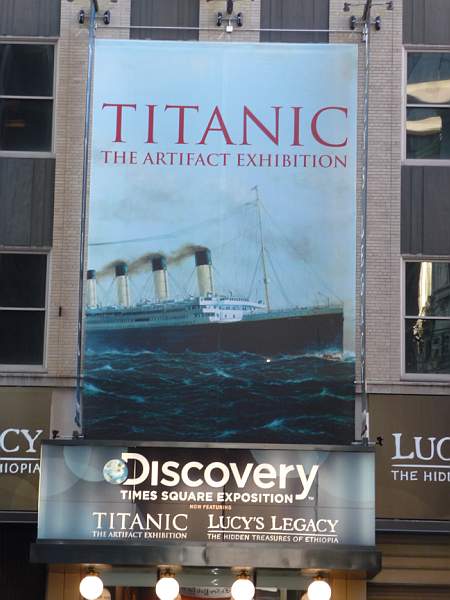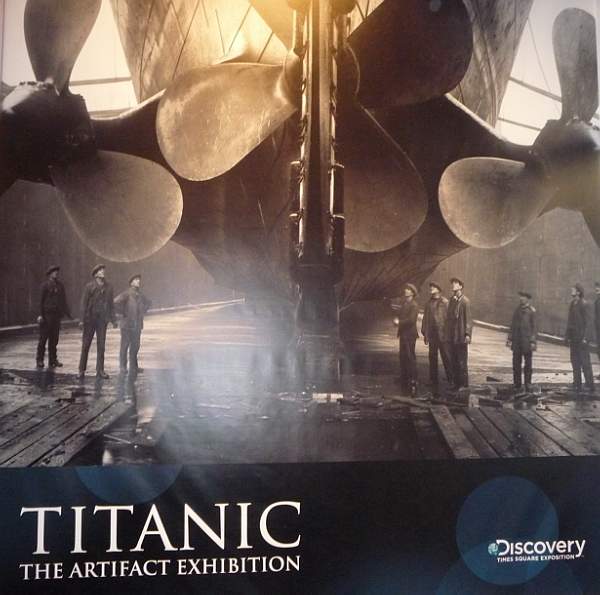Published in the Ocean Watch column, Honolulu Star-Advertiser © Susan Scott
October 19, 2009
Learning about Titanic goes on through book
I thought I knew a lot about the Titanic, but in New York City last week I went to an exhibit about the ship, and there found a book called “882 1/2 Amazing Answers to Your Questions About the Titanic” ($10, Scholastic Inc.). Of those answers I knew two. One, the ship was considered unsinkable, and two, it hit an iceberg and sank.
Among the remaining 880 1/2 facts in the book is the significance of the number in its title. The Titanic was 882 1/2 feet long, about four city blocks. Its width was equivalent to a four-lane highway, and its height equaled an 11-story building.

In Greek mythology the Titans were a race of giants, and it would have taken all of them just to haul up the ship’s anchors. The center one alone weighed 15 tons and took a 20-horse team to pull it to the shipyard.
The Titanic was enormous in 1912, but by today’s standards it’s practically a dinghy. One modern cruise liner called the Grand Princess is about twice the size of the Titanic and equally opulent.
Two years after the sinking, schemes began to locate and raise the ship, and continued for decades.
One inventor thought he could lift the ship using electromagnets. Another plan suggested building huge winches to crank it to the surface. One crackpot (my term) thought filling the hull with pingpong balls might float the boat.
No one, however, could even find it.
Finally, in 1985, a team led by Woods Hole geologist Robert Ballard located the Titanic in 12,460 feet of water by running a video camera in wide arcs. After celebrating the discovery, the team held a memorial service for those who died in the tragedy.
Beginning a year later, Ballard took 11 photographic trips to the wreck in a tiny submarine. Shipworms had eaten nearly all the wood on the ship, leaving items in odd positions. In one sandy area, dishes, minus their cabinets, still stood in neat rows.
Crabs, starfish, sponges, anemones and fish inhabit what’s left of the grand ship.
Ballard took nothing from the wreck, believing it a grave site that shouldn’t be disturbed. Since then, other salvaging expeditions have taken hundreds of dishes, light fixtures, luggage and other personal items from the area. The chemicals used in tanning leather kept bacteria from eating some suitcases, leaving personal items surprisingly intact.
Some relatives of those lost were upset over these collections, calling the salvagers fortune hunters and pirates. But seeing these objects moved me. The exhibit honors the dead, I feel, by keeping their memory alive.

The 1997 movie “Titanic” also keeps the memory alive, although Jack and Rose are fiction, as is the scene where the lovers balance on the bow. No passengers were allowed anywhere around the front of the ship, let alone there. Still, due to Jack-and-Rose fever, cruise ship crews today must tell passengers not to try standing at the tip of the bow.
The film cost $200 million to make. The ship cost $123 million to build.
OK, that’s 33 things I learned about the Titanic. To get the rest, buy this excellent book, available at Amazon.com. It also has great pictures. Even better, see the exhibit. It travels.
The authors pose this last question, the 1/2 , for readers to answer: “Will we always be fascinated by the story of the Titanic?”
Everyone knows the answer to that.